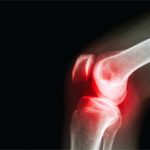NEW YORK (Reuters Health)—In patients with knee osteoarthritis (OA), telehealth-delivered exercise and diet programs are superior to electronic health information for reducing pain and improving function, although the contribution of diet is modest, a randomized trial shows.1
“This research provides evidence from a large clinical trial to help tease out how much benefit dietary weight loss provides for key outcomes for people with knee osteoarthritis, over and above that of exercise,” Dr. Kim Bennell of the University of Melbourne tells Reuters Health by email.
“Given that our participants had private health insurance, were relatively well educated and volunteered to participate in the study, it is possible that they were already motivated and willing to improve their health, including their knee problem, and engage in the program,” she says.
“As such,” she says, “our results may not necessarily be generalizable to those who are less motivated to do something about their knee pain. However, we believe that this would be broadly reflective of the ‘real-life’ implementation of such a program where only people seeking care for their knee problem would sign up.”
As reported in the Annals of Internal Medicine, Dr. Bennell and colleagues compared two six-month, telehealth-delivered exercise programs, one with and one without a dietary intervention, and a control group who received only electronic health information.1
Australian private health insurance members with symptomatic knee osteoarthritis and a body mass index between 28 and 40 kg/m2 participated. A total of 379 provided six-month outcomes and 372, 12-month outcomes. The mean age was 65, and about half of the participants in the intervention groups were women (67% in the control group).
The exercise program included six videoconferencing consultations with a physical therapist for exercise, self-management advice, and behavioral counseling, plus equipment and resources.
The diet and exercise program included an additional six dietitian consultations for a ketogenic very-low-calorie diet followed by a transition to healthy eating, as well as nutrition and behavioral resources.
The primary outcomes were changes in knee pain on a numerical rating scale (NRS) of 0 to 10 (higher indicating worse) and physical function on the Western Ontario and McMaster Universities Osteoarthritis Index (WOMAC) scale, (0 to 68, higher indicating worse) at six (primary) and 12 months.
At six months, both programs were superior to control for pain. Between-group mean differences in the change on NRS for diet and exercise was -1.5 and for exercise alone, – 0.8. Both programs were also better on functional measures, with between-group mean differences in the change on the WOMAC for diet and exercise, – 9.8 and exercise alone, -7.0.
Further, the diet and exercise program was superior to exercise alone for pain (- 0.6) and for function (- 2.8).
Findings were similar at 12 months.
Dr. Bennell added, “Both interventions were co-designed with Medibank Private, Australia’s largest provider of private health insurance with over 3.7 million members, to ensure that they could be feasibly implemented beyond the research setting. The interventions were also designed to have a limited number of clinician consultations…to minimize intervention costs and were structured in their content so that they could be replicated.”
Dr. Jeffrey Geller, Chief of Orthopedic Surgery at NewYork Presbyterian Lawrence Hospital in Bronxville, commented on the study in an email to Reuters Health. “The biggest concern I have with this study is the inherent selection bias and outcome bias. The patients all volunteered for the study, which likely leads to a higher rate of compliance with prescribed treatment compared to the general population.”
“In addition,” he said, “there was a relatively high attrition rate, whereby those patients having less success or unwilling to complete the treatment for the full six months dropped out, leading to a likely higher rate of positive outcomes in those patients that completed the six months of treatment.”
“Nonetheless,” he added, “there is value in this study which clearly demonstrated that an active, monitored program where patients who are actively monitored can successfully lose weight, improve their exercise level, improve their mood, and most importantly decrease their pain level.”
“If implemented on a broader scale, (the program) needs to have a mechanism to identify those patients losing motivation, who risk falling out of a potentially beneficial intervention program,” Dr. Geller concluded.
Reference
- Bennell KL, Lawford BJ, Keating C, et al. Comparing video-based, telehealth-delivered exercise and weight loss programs with online education on outcomes of knee osteoarthritis: A randomized trial. Ann Intern Med. 2021 Nov 30. Online ahead of print.


